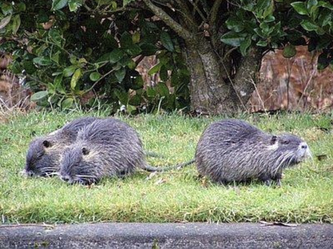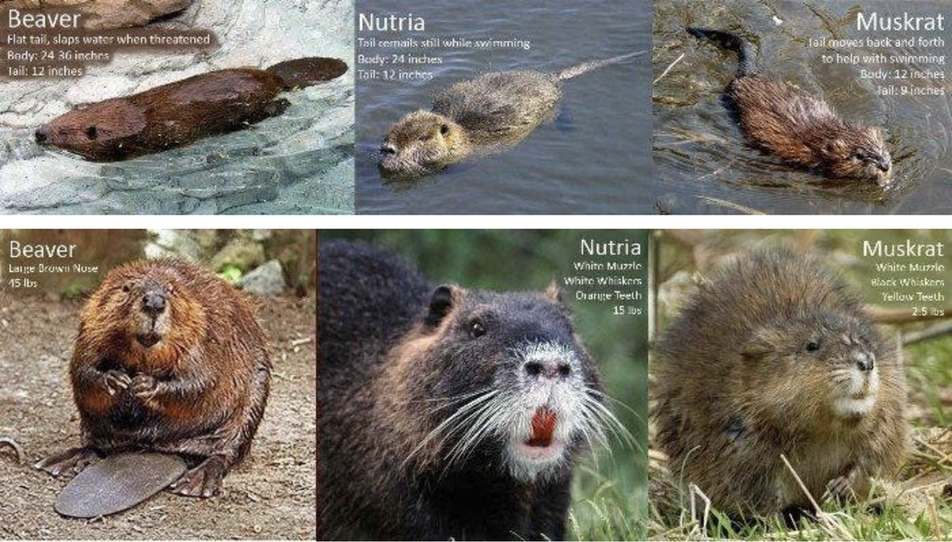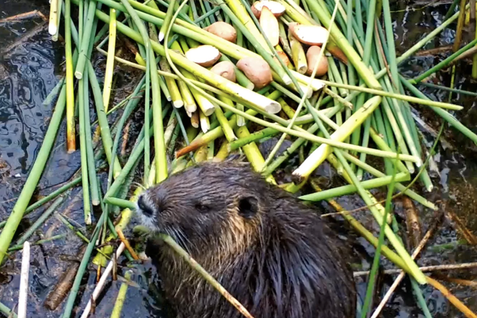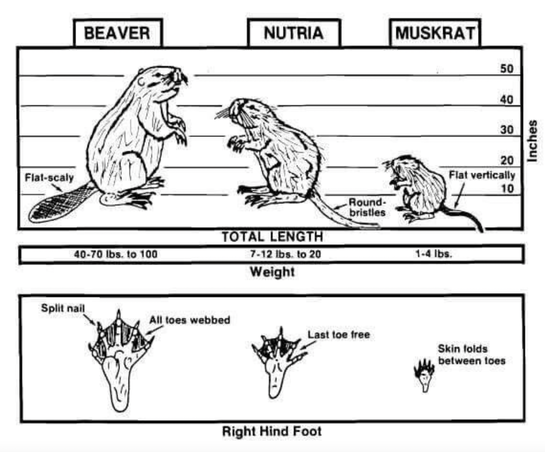THANKS TO THE BEAVERS...Reed Lake is considered the oldest naturally occurring
lake within the City of Portland. This is thanks to the original stewardship of the American Beaver who built dams to collect the water from the naturally occurring springs (Zac Perry Lecture. Sept 2021) . Of course, Indigenous peoples were also stewards of the land, including the Chinook, Clackamas, Multnomah, and Cowlitz. The American beaver is known as ee’-na in the Chinook Jargon language, which was used for trading (1). |
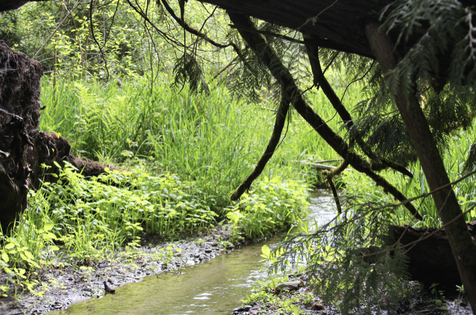 Photo by Rane Wilson. April 2016. Shows the Reed Canyon. Photo by Rane Wilson. April 2016. Shows the Reed Canyon.
|
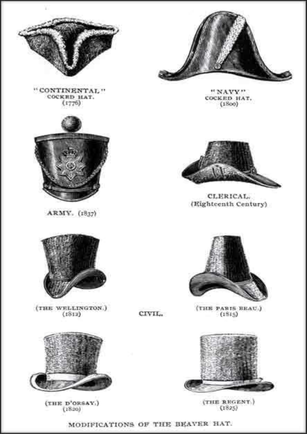 Shapes and styles of beaver hat 1776–1825 (2).
Shapes and styles of beaver hat 1776–1825 (2).
When European settlers encountered the ee’-na, their waterproof pelts quickly became a commodity. Beaver pelt was used to make felt hats in Europe that indicated higher status. The beaver were so sought after during this time that they were nearly hunted to extinction. The near disappearance of this natural environmental engineer had lasting environmental and social impacts on the land and peoples of North America (2). One such consequence of this overexploitation was the introduction of the nutria.
When beaver populations began to dwindle in the 1880s, fur traders brought a cousin of the beaver, the nutria, to North America. Nutria are large semi-aquatic rodents native to South America where they are called “coypu”. They were introduced to Oregon in the 1930s and marketed as a quick and easy way to make money in the fur industry. When the nutria fur market collapsed in the late 1940s, however, thousands of nutria were released and the population quickly spread throughout western Oregon (3).
|
From a distance, nutria or coypu can be mistaken for beaver, but it is a smaller animal with a thin, rat-like tail. Nutria have prominent orange incisors and are about two feet long, with fur that ranges from yellowish to dark brown. Their hind feet are webbed to facilitate swimming, and their noses, eyes, and ears are set high on their heads. Much like beavers, nutria live in freshwater marshes and wetlands and can adapt relatively easily to different habitats. This made them particularly suitable to take up the habitat where beavers had been cleared out (3).
|
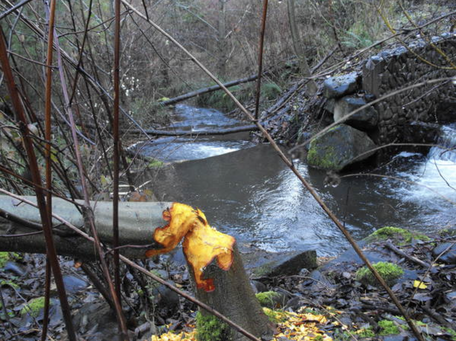 Photo by Zac Perry Dec. 2011. Shows beaver activity in Reed Canyon
Photo by Zac Perry Dec. 2011. Shows beaver activity in Reed Canyon
As with many other places in the pacific northwest, nutria can be found in the Portland area, in marshes, ponds, and urban greenspaces, including Reed canyon. However, with the restoration of the canyon which began in 1999, beaver began to return to the area. With cleaner water, less human obstruction, and the return of logs and wood on a healthy forest floor, the beaver could reclaim their ecological niche. A niche describes how an organism or population interacts with and contributes to resources in a community. With the beaver moving in, more nutria are moving out.
The beaver in the Canyon like to stay by the springs at the east part of the lake. When going over these spring waters, one can sometimes see the routes dug by beavers in the shallow water. Because beavers move faster in water than on land, they create these deepened pathways to move about more quickly (Dylan Tour Sept. 2021). You usually won’t see a beaver on land in the daytime, but you might see evidence of its presence such as trees sawed down using their large and strong teeth or tracks in the mud. See the chart below to compare what beaver, nutria, and muskrat tracks might look like.
Works Cited
- “An Endangered Perspective: Chinook Language.” n.d. Accessed September 3, 2021. https://www.lakeforest.edu/academics/majors-and-minors/environmental-studies/an-endangered-perspective-chinook-language.
- “A Brief History of the Beaver Trade.” n.d. Accessed September 3, 2021. https://humwp.ucsc.edu/cwh/feinstein/A%20brief%20history%20of%20the%20beaver%20trade.html.
- “Nutria.” Oregon Historical Society. Accessed September 3, 2021. https://www.oregonencyclopedia.org/articles/nutria/#.YTLdVlNKg0o.
- “Nutria | Oregon Department of Fish & Wildlife.” n.d. Accessed September 3, 2021. https://myodfw.com/wildlife-viewing/species/nutria.
